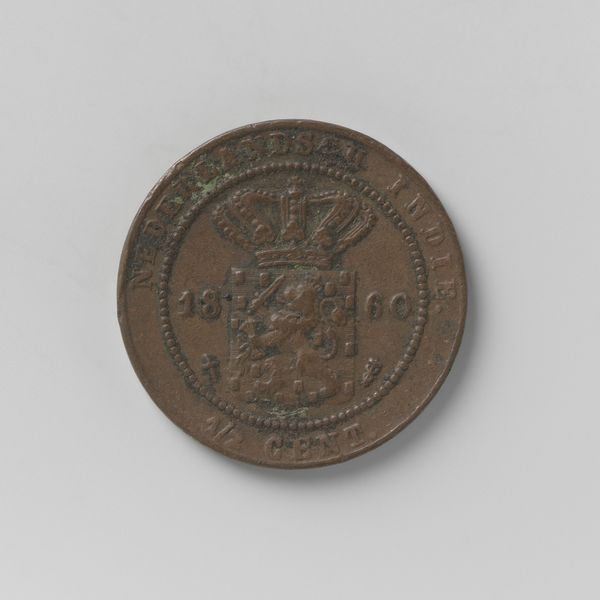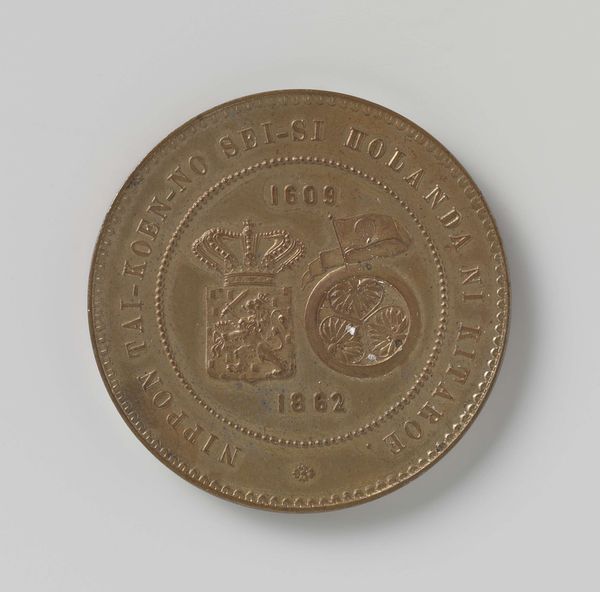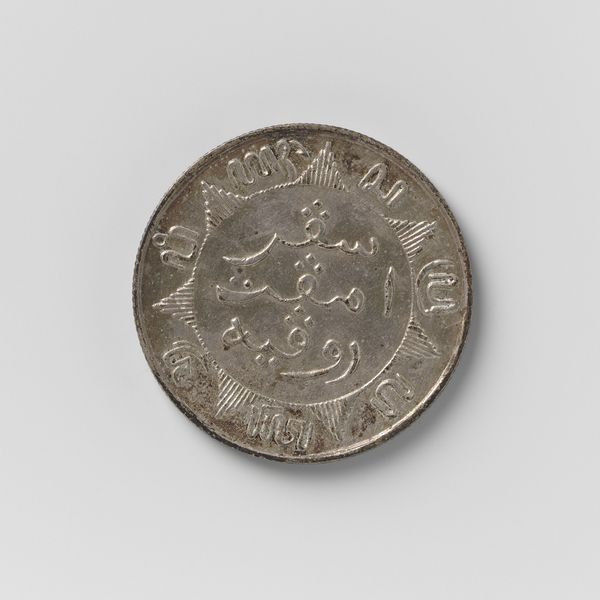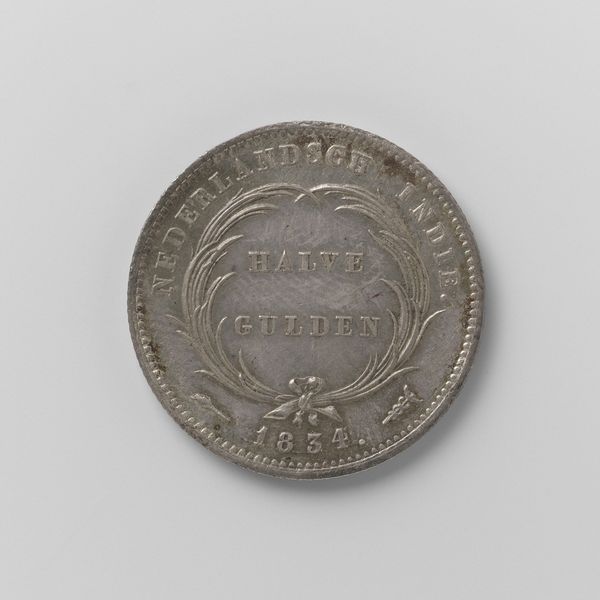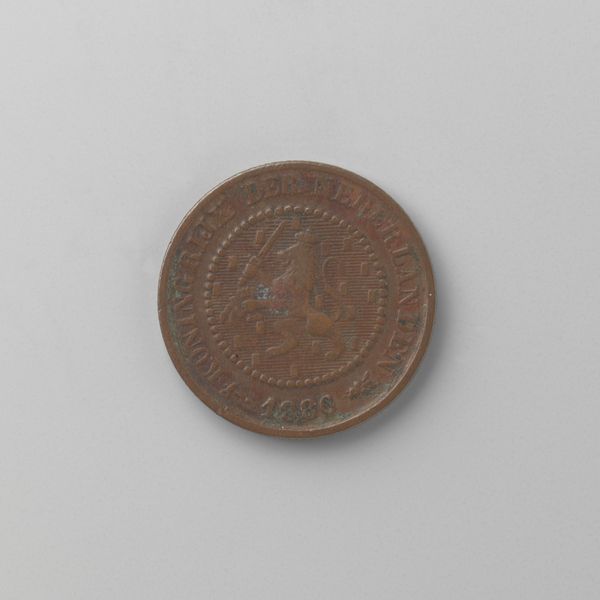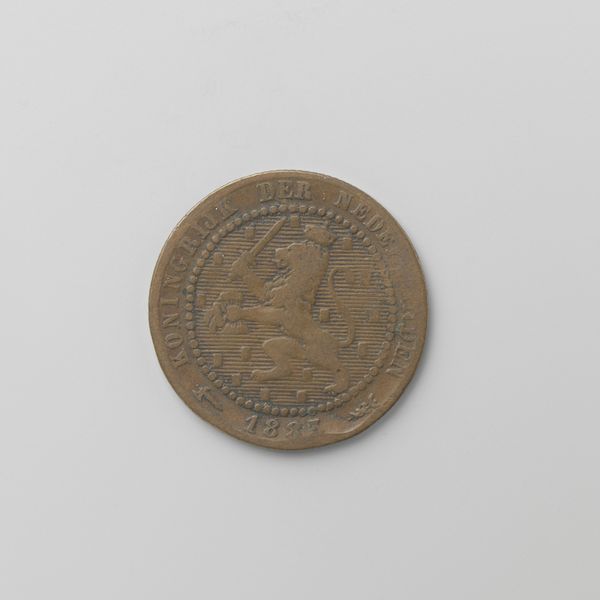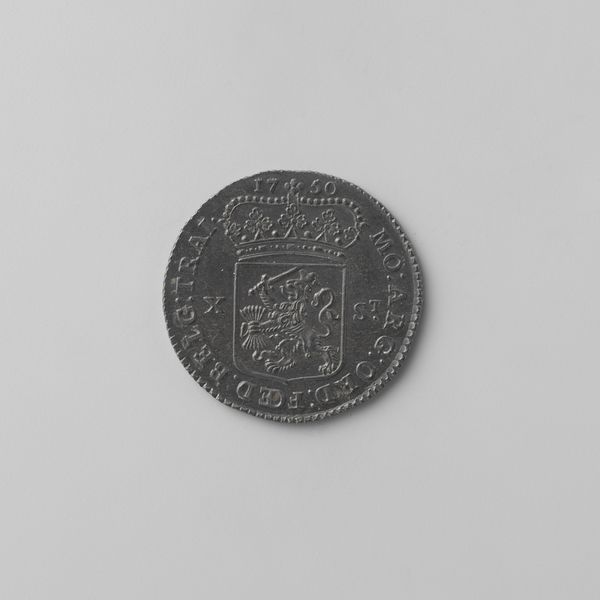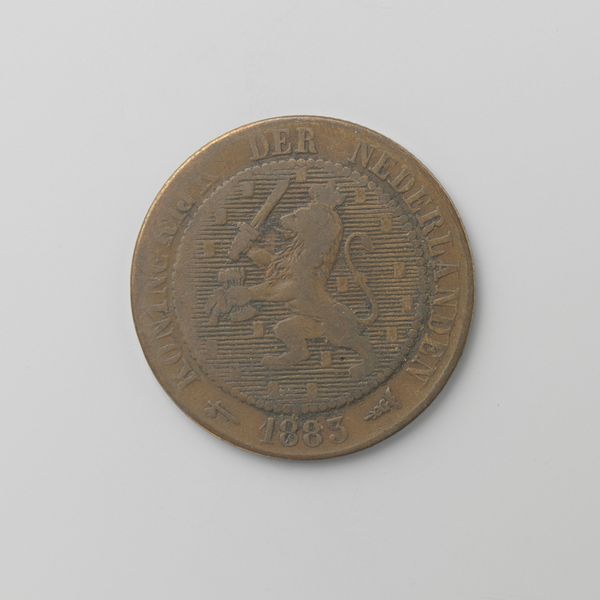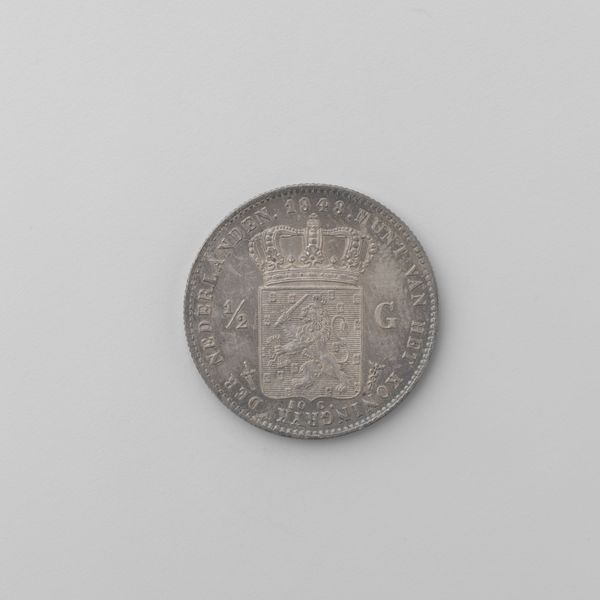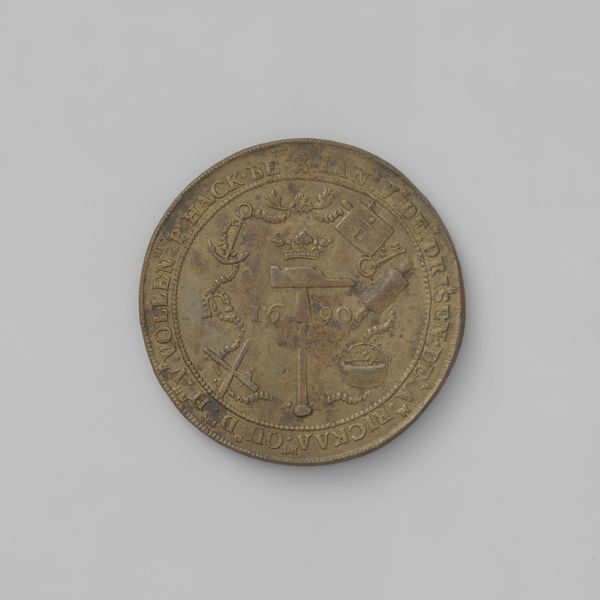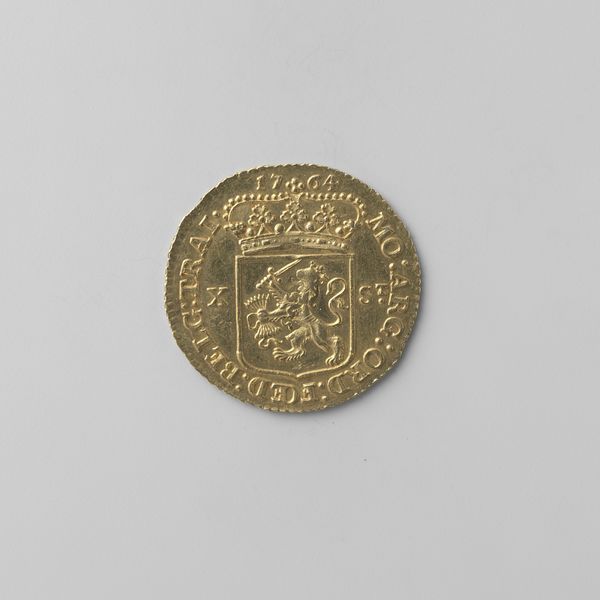
graphic-art, print, metal, photography
#
graphic-art
# print
#
metal
#
photography
#
ancient-mediterranean
Dimensions: diameter 1.8 cm, weight 2.28 gr
Copyright: Rijks Museum: Open Domain
Curator: So, this seemingly insignificant object is a "½ cent van Nederlands-Indië, 1858," or a half-cent coin from the Dutch East Indies, dating back to 1858. Editor: It’s funny, isn't it? This tiny thing held so much...weight. Looking at it, I get this faded feeling, like a half-remembered story from someone else's past. The metal itself feels like it's trying to tell me something about the way things used to be, all whispers and blurry images. Curator: Precisely. These coins represent a complex history of colonial power and trade. The Dutch East Indies, now Indonesia, was a crucial colony. This coin facilitated economic transactions and solidified Dutch authority in the region, functioning as a symbol of domination for almost a century. Editor: Symbol of domination...Yeah. It’s crazy to think about. See that crowned coat-of-arms in the middle there? To me, that doesn't just represent royal power, but a whole mindset, a feeling of entitlement almost literally stamped onto this little piece of metal. It makes you wonder about the power dynamics involved when someone received one of these as payment. Curator: It is crucial to understand that even something as mundane as currency reinforces power structures. The presence of the Dutch coat of arms on a coin used in the Indies visually underscored the Netherlands' colonial control. Even the date is significant. The coin, designed in 1858, embodies the racial and class politics inherent in the economic activities of the period. Editor: Absolutely. It also makes you consider the physical impact it had, like what were the working conditions like for laborers producing products being traded for these coins? And this aged, tarnished quality gives it such a strong character... Curator: These types of analyses highlight the broader impact. By situating it within postcolonial studies, we can begin to understand how systems of inequality are embedded in our everyday surroundings. Editor: Looking at it, I just feel how deeply objects can carry both pride and pain. It makes you wonder how many hands it passed through, how many stories it could tell about those long-ago days. Curator: Indeed. I believe looking at the coin prompts crucial questioning about economics and its relationship to colonialism. Editor: And maybe a small reminder that even small change can have a big story behind it.
Comments
No comments
Be the first to comment and join the conversation on the ultimate creative platform.
